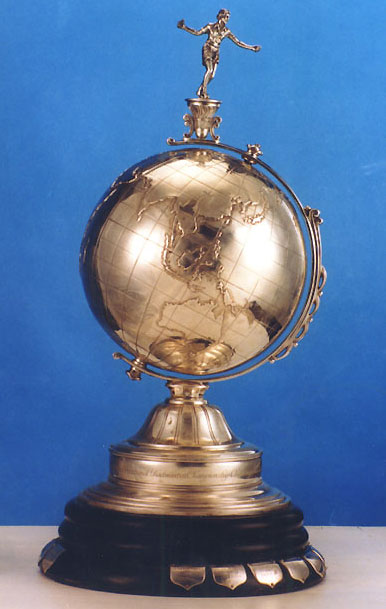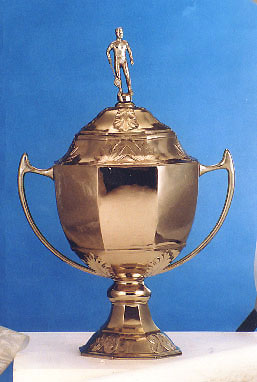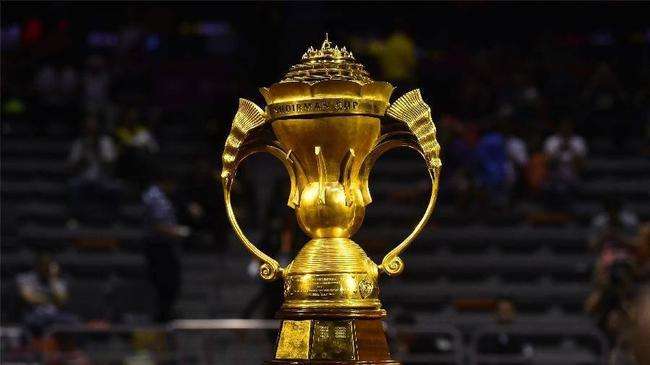According to relevant information, the earliest written record of badminton is the famous French painter Jordan (1699-1779) painted a painting entitled “badminton” (The shuttle coack) oil painting. The painting shows a young girl holding a racket with net strings, and the ball is made of seven different coloured feathers inserted into the ball holder.
Legend has it that in Japan as early as the 14th and 15th centuries, there was already a game in which two people used wooden rackets to hit a feathered cherry stone back and forth as a ball. The sport soon spread to other countries in Europe and Asia. But because the ball is not strong and durable, flight speed and too fast, so although the popularity of a while but soon disappeared.
After that, there are similar badminton game appeared in India and Russia, India called this game for “Pune”, it is wrapped into a ball with floss, inserted on the feathers, with a wooden racket against. In Russia, it was called “Volang”. The ball used is very similar to our present shuttlecock.
Thus, the origin of badminton is closely related to the game similar to “shuttlecock board”. Due to the country. Ethnicity. Cultural and linguistic differences, the name of the original badminton game is different. Therefore, the world is still divided on when and where this actually began. But now the name of the badminton sport is basically the same. 1873, in Gloucestershire, England, the town of Birmington (BADMINTON) has a name Baufort’s duke, a banquet at home guests, coinciding with the rain, guests only have to get together in the living room, a long time, we all feel bored, at that time, there is a retired British army officer from India, will be in Bombay, India to see the “A British officer, who had retired from India, introduced Pune to everyone, and so they played this game of badminton in the hall. As this activity was extremely fun, it soon became popular. As this activity was born in Birmington, some people proposed to the name of the manor named this sport, so, in English badminton is called “BADMINTON”. The original Duke of Balfourt’s estate is now also renamed “badminton hall” to commemorate, and display the original badminton rackets and balls in the mid-19th century. At that time, the court was gourd-shaped, wide at both ends and narrow in the middle, with a net at the narrow end, until 1901 when it was changed to a rectangular shape.
In 1877, the first book of badminton rules was published in England.
In 1893, the world’s first badminton association was established in England, and in 1899, the association held the first “All Englang Badminton Championships” (All Englang Badminton Champinships), which is the traditional, unofficial world badminton championships held in Wembley Sports Centre in London, England since 1899.
Since then, badminton has spread from the Upper Antilles to Scandinavia and the Commonwealth, and in the early 20th century to Asia, the Americas, Oceania and finally Africa.
With the increasing number of countries playing the sport in the world, the International Badminton Federation (IBF) was established in 1934, with its headquarters in London. In 1939, the IBF adopted the Rules of Badminton Competition, which are common to all member countries.
From the 1920s to the 1940s, badminton developed rapidly in Europe and America. Especially, England and Denmark almost monopolised the titles of all major international competitions. Secondly, the United States of America and Canada also had a very high level of badminton.
The first world men’s badminton team championships held in 1948-1949 – “Thomas Cup” tournament, the Malaysian team defeated the United States, Great Britain and Denmark and other strong teams won the championship, thus opening up the era of Asian dominance in the international badminton arena.
In the 1950s, Asian badminton developed rapidly, especially in Malaysia, where a number of outstanding players emerged and won two consecutive Thomas Cups held between 1951 and 1955. Malaysia also won the men’s singles and doubles titles in the All England Championships.
In the late 1950s, the Indonesian badminton team began to rise in the international badminton scene. They innovated on the basis of learning the techniques and playing styles of the European players, and accelerated the speed and control of the landing points on the badminton court, so that the level of badminton techniques was raised to a new stage. The team won the 4th Thomas Cup by defeating Malaysia in one stroke. In the 60’s and 70’s, Indonesia’s technical level (except China) has been in the leading position in the international badminton world, from the 4th to the 11th Thomas Cup, except for the 7th was won by Malaysia, the rest of the team was owned by Indonesia, and almost monopolised the men’s singles and doubles championships of the All-England Championships in this period.
On the women’s side, the United States dominated the world in the mid-1950s and early 1960s, winning three consecutive world women’s team titles (the Uber Cup), and in the late 1960s and 1970s, the world’s dominance shifted to Japan.
In May 1981, the International Badminton Federation (IBF) restored the legal seat of China in the IBF, which opened a new page in the history of the international badminton arena, and entered a glorious period in which Chinese badminton players dominated the international badminton arena.
In 1988 Seoul Olympic Games, badminton for the first time into the Olympic family, was listed as a performance programme, the 1992 Barcelona Olympic Games as an official competition, with four gold medals for men’s and women’s singles and men’s and women’s doubles, and the 1996 Atlanta Olympics, mixed doubles was added.





